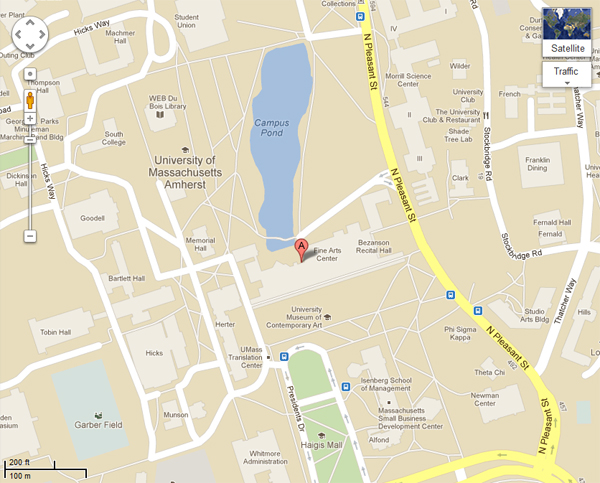WPA Prints and Drawings from
the Permanent Collection
September 12 – October 23, 1992

Concurrent with the University Gallery's presentation of Deep Cover is the exhibition WPA: Prints and Drawings from the Permanent collection featuring 35 works by artists employed through the Federal Art Project of the Works Progress Administration. The FAP was established in 1935 as one of the government-sponsored art programs devised by Franklin D. Roosevelt's New Deal administration to mitigate the disastrous effects of America's Great Depression. In operation for eight years, the FAP employed over 5,000 artists nationwide for the purposes of documenting America's then-current plight and of creating images that would remind a distraught people of their inner strength. The Gallery's exhibition includes urban and rural scenes that portray moods ranging from abjection to conviction, as well as images descriptive of daily life. Works by Fred Becker, Minnetta Good, Louis Lozowick, Claire Millman and Alfred Sessler are among those on view.
Claire Millman's lithograph titled Factory Recess (n.d.) shows a group of men and women who are attempting to steal some moments of carefree play within the courtyard of a factory complex. A tight enclosure is visually created by the position of the cement walls and factory's facades which appear to tip forward. The formal composition squeezes the figures into an uncomfortably shallow space within the picture's field. Sharp angles and stiff, exaggerated features emphasize the sense of urban monotony that many were experiencing at the time. The bleak circumstances evoked here are reinforced by the inclusion of the heads of two men in each of the print's lower corners: while one raises a hand to his furrowed brow and looks back in bemusement towards the depicted scene, the other stares out, inanimately, at us.
Contrasting with the aforementioned view, Man's Canyons (1936), by Samuel Margolies, celebrates America's greatness as seen through the planning and growth of her cities. In Margolies' etching, a divine light casts its rays across a field of skyscrapers that soar above miniscule people and cars. The print's title equates the grandeur of natural wonders with that of man-made environments. Implicit is the message that America, by drawing on her past achievements, will see continued success in the future.
The differing sentiments portrayed in these two examples contributed to the discussions taking place during. the 1930s of what 'American' art should be, of what manner and subject matter best represented America's social condition. Unemployment, homelessness, racism the situation in the United states today differs only in degree from the one of nearly 60 years ago. We are, as well, presently engaged in a debate concerning government support of the arts. If a government's ultimate responsibility is to tend to a country's physical and cultural welfare and, if the health of a nation is, in part, dependent on the creative energies of her artists, then the current debate does not concern the definition of a typically American art, but the artistic articulation of a diverse America. To this end, the creation and support of an art that would reach the broadest possible public becomes little more than a governmental tool that denies the breadth" that can be achieved by so many individual voices. What is of fundamental concern is the role played by a democratic government in reconciling the rights of the individual with the needs of the community: in essence, the interpretation of democracy.
|
Related Media
|
|
Introduction |















